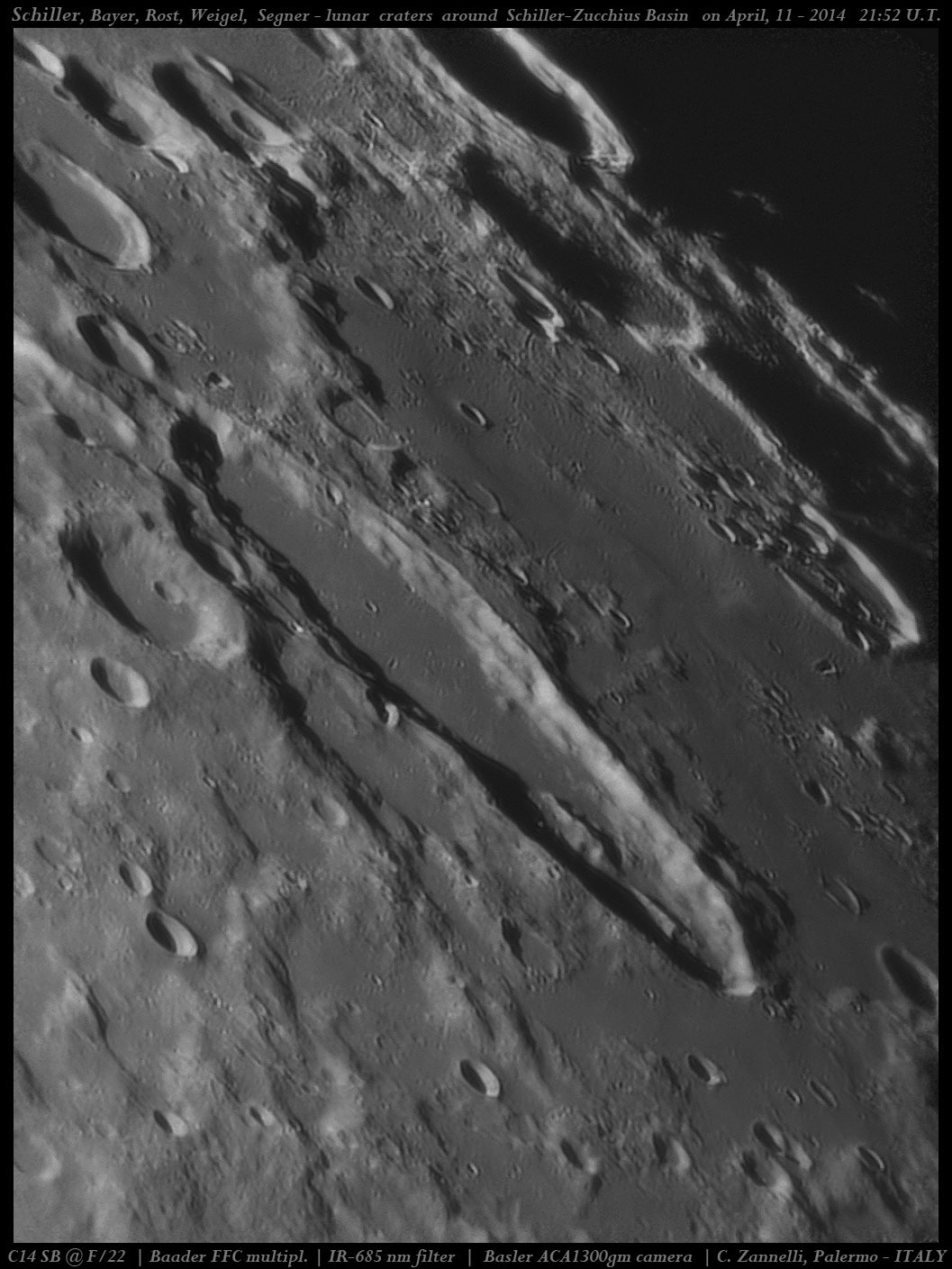Difference between revisions of "June 22, 2014"
| Line 6: | Line 6: | ||
<em>image by [mailto:c.zannelli@virgilio.it Carmelo Zannelli], Palermo, Italy</em><br /> | <em>image by [mailto:c.zannelli@virgilio.it Carmelo Zannelli], Palermo, Italy</em><br /> | ||
<br /> | <br /> | ||
| − | Having been mesmerized recently by a dramatic spacecraft [http://lpod. | + | Having been mesmerized recently by a dramatic spacecraft [http://www2.lpod.org/wiki/June_20,_2014 image] of the [https://the-moon.us/wiki/Schiller-Zucchius_Basin Schiller-Zucchius Basin] you may not remember what it looks like from Earth. This image helps, but in fact, I've never seen [https://the-moon.us/wiki/Schiller Schiller] and the nearby basin this well. Between LRO and LPOD I am used to seeing the Moon far better than it ever looks through my telescopes. Part of the reason is the small instruments I use (4" and 6"), and that my mind records all of the instants of observing, whereas what appears in LPOD is only the best images culled from submissions from around the world. And LRO has a couple of advantages over my backyard location, even though the Narrow Angle Camera has only an 8" aperture. Mel's image nicely shows the gentle subsidence of the inner depression and the central line of three mounds that Maurice Collins noticed. Another striking feature, but perhaps not immediately appreciated for what it is, is the line of small pits that diagonally crosses the top of the basin. This is a basin secondary crater chain that would be well known if placed more favorably for terrestrial observers.<br /> |
<br /> | <br /> | ||
<em>[mailto:tychocrater@yahoo.com Chuck Wood]</em><br /> | <em>[mailto:tychocrater@yahoo.com Chuck Wood]</em><br /> | ||
<br /> | <br /> | ||
<strong>Related Links</strong><br /> | <strong>Related Links</strong><br /> | ||
| − | <em>[ | + | <em>[[21st Century Atlas of the Moon|21st Century Atlas]]</em> chart 24.<br /> |
<br /> | <br /> | ||
<p><b>Yesterday's LPOD:</b> [[June 21, 2014|Bowling Pins]] </p> | <p><b>Yesterday's LPOD:</b> [[June 21, 2014|Bowling Pins]] </p> | ||
Latest revision as of 08:30, 28 October 2018
The View From Sicily

image by Carmelo Zannelli, Palermo, Italy
Having been mesmerized recently by a dramatic spacecraft image of the Schiller-Zucchius Basin you may not remember what it looks like from Earth. This image helps, but in fact, I've never seen Schiller and the nearby basin this well. Between LRO and LPOD I am used to seeing the Moon far better than it ever looks through my telescopes. Part of the reason is the small instruments I use (4" and 6"), and that my mind records all of the instants of observing, whereas what appears in LPOD is only the best images culled from submissions from around the world. And LRO has a couple of advantages over my backyard location, even though the Narrow Angle Camera has only an 8" aperture. Mel's image nicely shows the gentle subsidence of the inner depression and the central line of three mounds that Maurice Collins noticed. Another striking feature, but perhaps not immediately appreciated for what it is, is the line of small pits that diagonally crosses the top of the basin. This is a basin secondary crater chain that would be well known if placed more favorably for terrestrial observers.
Chuck Wood
Related Links
21st Century Atlas chart 24.
Yesterday's LPOD: Bowling Pins
Tomorrow's LPOD: A Lunar King
COMMENTS?
Register, Log in, and join in the comments.



